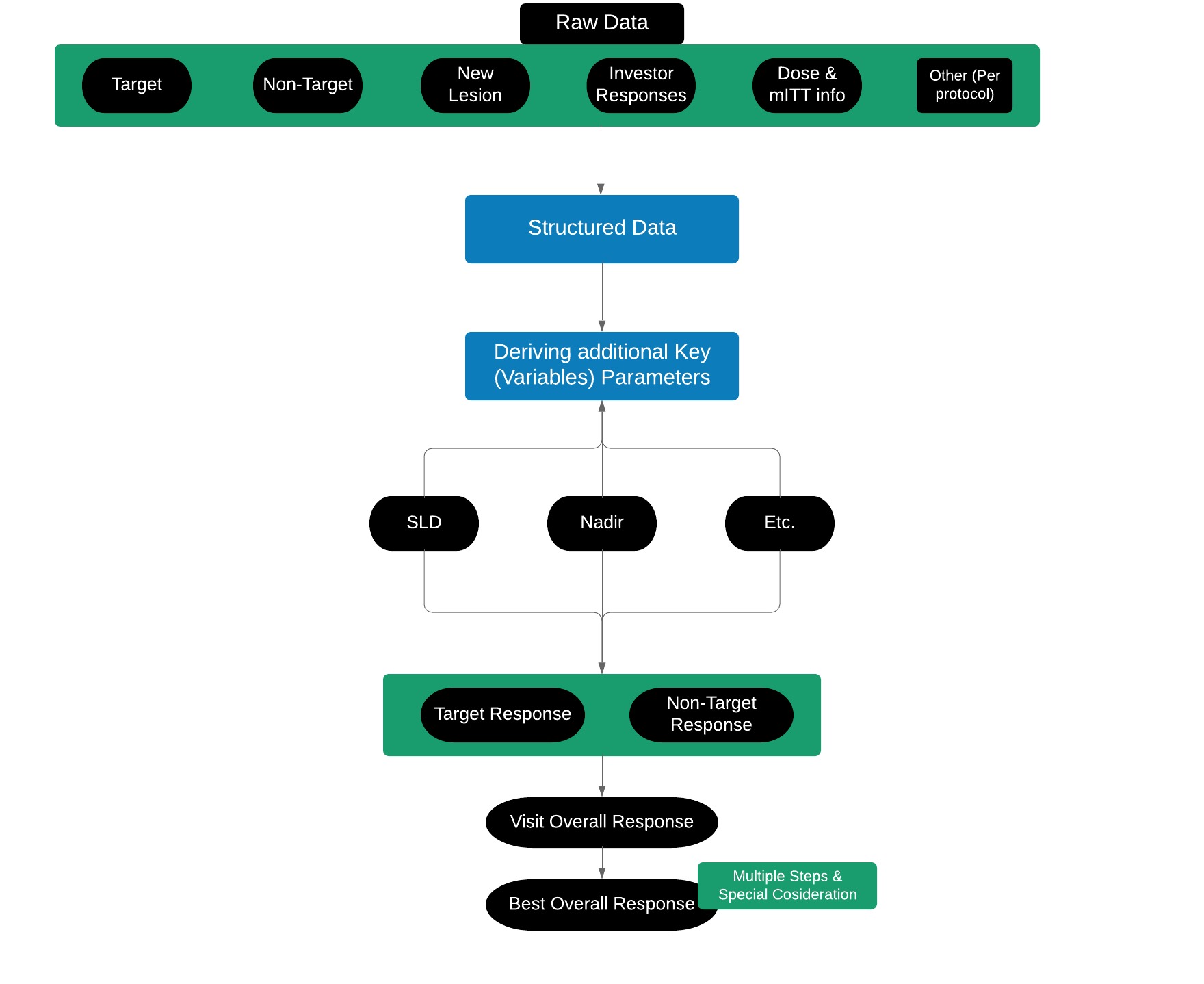
CALCULATING BOR FROM LESION SIZE USING RECIST CRITERIA: A BRIEF GUIDE TO SAS PROGRAMMER
Background:
RECIST stands for Response Evaluation Criteria in Solid Tumors and serves guidance for assessing tumor shrinkage and disease progression, an important endpoint in many Oncology Clinical Trials. Currently, the revised version is RECIST v1.1, published in 2008 (Eisenhauer E.A. et al) and is used by Physicians, Statisticians, and Clinical Scientists to assess Response of subjects and desired outcomes in a clinical trial.
Outline:

The investigator determines a maximum of five lesions (a maximum of only 2 per organ) as Target, and the rest identified as Non-Target. In addition, if its' a Target Lesion, size of the lesion should be present (as per RECIST) although, for a non-target, it may or may not be recorded in studies.
Once the required data is collected (Raw Data or coming from an ADaM/ADaM like dataset), it should be structured and formatted to adapt to our programming needs. Such data comprise of
- Date of collection
- Visit Id and Visit Names
- Lesion Ids (numbers)
- Lesion (Tumor) Type - Target or Non-target
- Lesion Site (especially if Lymph Node or Other)
- Short Axis (Diameter)
- Long Axis (Diameter)
Outline:
Once Data is ready in a programmable format, the whole process of achieving Best Overall Response (BOR) from the raw data summarized in below steps (also see Programming Flowchart):
- Deriving additional required variables
- Deriving Target Response
- Deriving Non-Target Response
- Deriving Visit Overall Response
- Deriving Best Response.
Additional Derived variables:
Baseline SLD: Sum of all (Target) Lesion diameters at Baseline.
Percent Change from Baseline: defined as Percent Change in SLD's from Baseline.
Nadir: Lowest SLD recorded up-till (before) the current visit.-This value may (or may not) change at every visit.
Percent Change from Nadir: defined as Percent Change in SLD's from Nadir.
Target Response:
Target Response of a subject is determined based on increase or shrinkage in Tumor burden (Target Lesions as a primary component) and characterized as Complete Response (CR), Partial Response (PR), Stable Disease (SD), Progressive Disease (PD) or Not-evaluable (NE). They are computed based on the Percent Change from Baseline and Nadir and presence or absence of any New Lesions as per the guidelines are given in RECIST v1.1.
Non-Target Response:
Non-Target Response can be computed as CR, PD, non-CR/non-PD and NE based on the, the Non-target lesion status as determined by investigator and marked as "ABSENT", "STABLE", "PRESENT", "UNEQUIVOCAL PROGRESSION", or "NOT EVALUABLE" based on the guidelines given in RECIST v1.1.
Visit Overall Response:
Visit Overall Response are derived based on the combination of Target and Non-Target Response at that particular visit and by referring to guidelines in RECIST v1.1.
Best Overall Response:
Best Overall Response is the Best Response as seen from all the visits for a particular subject.
Conclusion:
Although reaching BOR from lesion size is a relatively straightforward approach but a programmer needs a good grasp on the RECIST concepts to determine the Target, Non-Target, and the Best Overall Response. Refer to paper RECIST v1.1 by Eisenhauer E.A. et al to understand the process in detail.
About Rang Technologies:
Headquartered in New Jersey, Rang Technologies has dedicated over a decade delivering innovative solutions and best talent to help businesses get the most out of the latest technologies in their digital transformation journey. Read More...